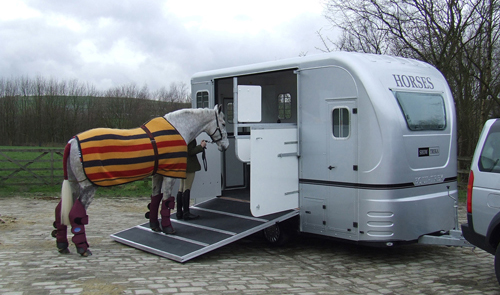
Find Out More Why Traveling Backwards Is Better, Safer & Preferred
This “buttress” posture adaptation is commonly exhibited during grazing, whereby the shoulder provides better lateral support than the rear legs. Often, the rear legs engage in a side stepping action when responding to lateral pressure, such as experienced in a trailer navigating a sharp corner.
A study examining the response to travelling forwards or backwards during a one hour journey showed a significant decrease in heart rate in the horses travelling backwards.
These horses also tended to rest more often on their rumps in maintaining their balance. The forward facing horses held their heads in a higher than average position and also moved more frequently due to difficulty in balancing.
Interestingly, the forward facing horses vocalised more frequently. Heart rates increased at loading and unloading, and decreased during the journey as the horses became accustomed to the motion of transport.
The authors concluded that the forward orientation may be more physically demanding due to efforts implemented to maintain balance.
Above taken from: Physiology, Balance, and Management of Horses During Transportation by Dr. Carolyn Stull, Extension Animal Welfare Specialist, University of California. Effects of transporting horses facing either forwards or backwards on their behaviour and heart rate by Dr. Natalie K Waran, Institute of Ecology & Resource Management, University of Edinburgh.



